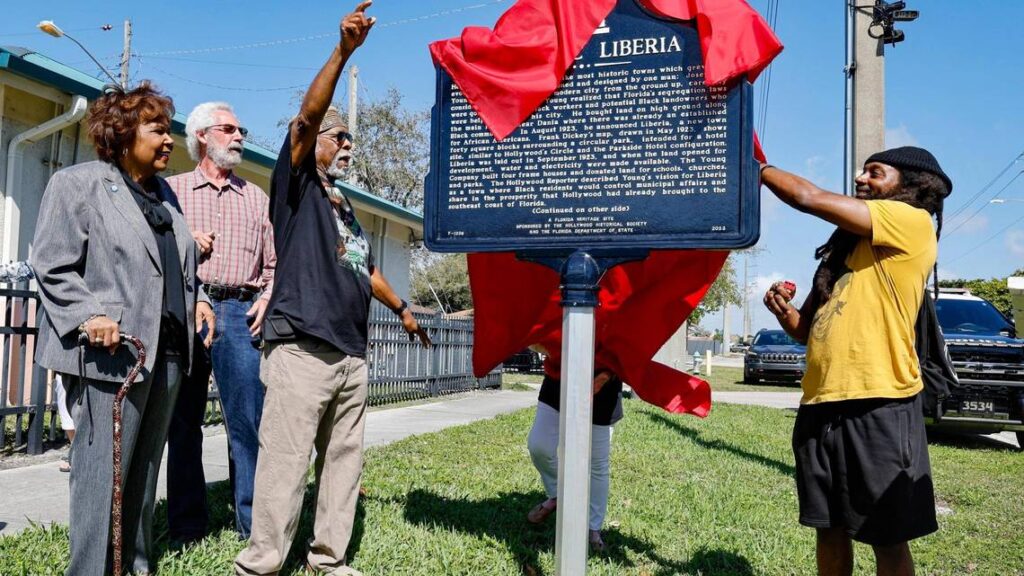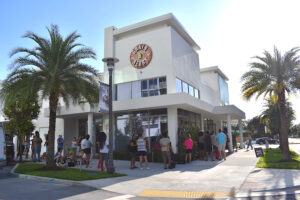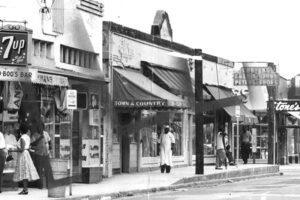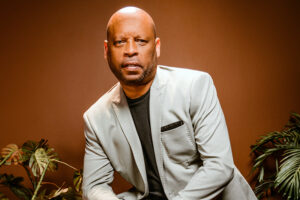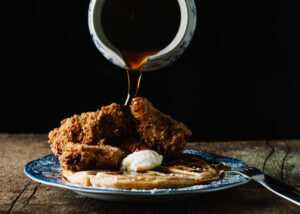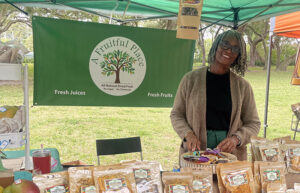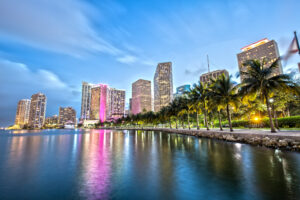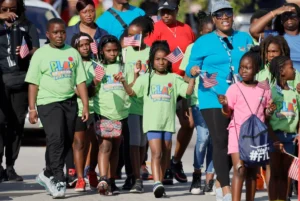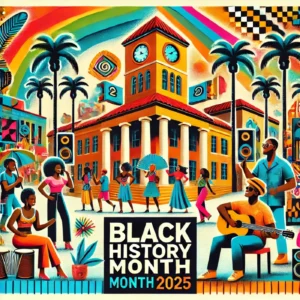By Amanda Rosa and Raisa Habersham
Updated February 15, 2025 4:08 PM
Earl Garnet Beneby rattles off the history of Liberia, a historically Black neighborhood in Hollywood, as if he were an auctioneer.
He recalled King’s grocery store owned by Ivan Emmanuel King. Remembered the home of Robert Mitchell being used as a speakeasy for Black entertainers such as The Temptations and James Brown who couldn’t go into many establishments due to segregation. And he looked back on John Evans, Brown’s relative, who had the first telephone in the neighborhood, useful for wives wanting to call their husbands away on business.
On Saturday, Beneby, 77, was one of about 45 people who gathered at the intersection of Raleigh Street and J.A. Ely Boulevard in Hollywood to unveil a Florida state historical marker, marking the significance of the community that has seen famous musicians such as Sam Cooke and B.B. King.
“It means a lot because even though this was a small community, it’s the people that came through,” he told the Miami Herald after the ceremony. The youngest of 10 children, Beneby was born and raised by Bahamian parents in Liberia. He now lives in Sunrise, but holds the Hollywood community near and dear.
This moment in history for Liberia comes as Hollywood turns 100. Liberia was founded about a year earlier. Liberia’s rich history is what made the Hollywood Historical Society work to get a historical marker for the neighborhood, a mission that took three years. “Established during segregation, Liberia became a self-sufficient neighborhood where Black residents who were excluded from other parts of the city built homes, businesses and places of worship,” Clive Taylor, the society’s president, said at Saturday’s event. “Despite systemic barriers, the community thrived, fostering a legacy of resilience, culture and economic contribution to early Hollywood.”
Beneby recalled that history fondly.
“Growing up, everything was centered around the church, the school and the community,” he said. “There was a certain continuity between the three, and the beautiful thing about it was all of our teachers and our coaches and our people that work in the community, they also lived in the community. So. It was a very, very tight community.”
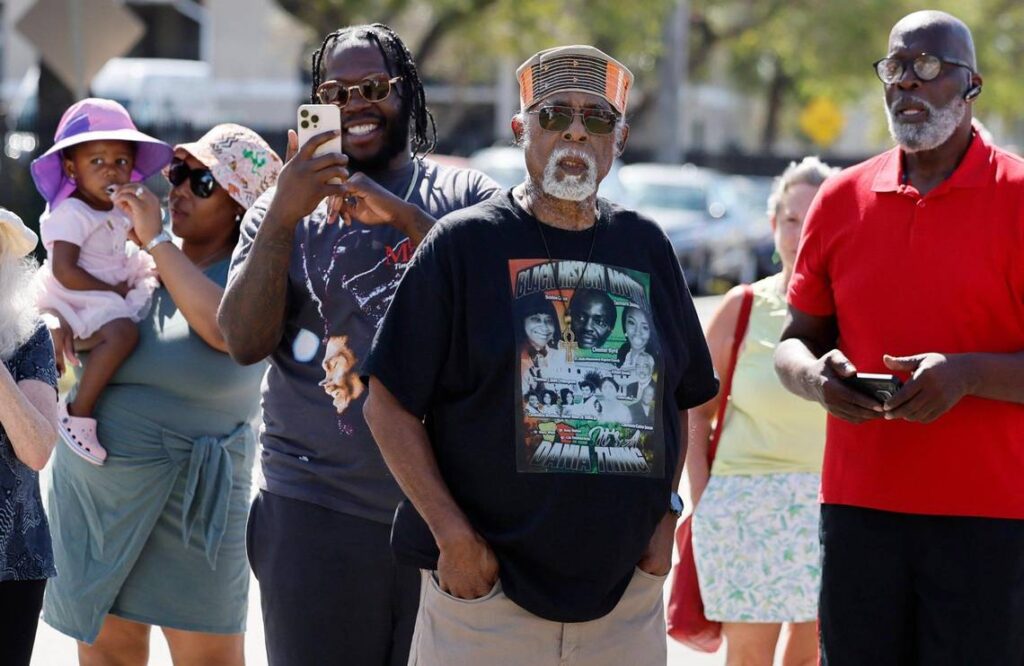
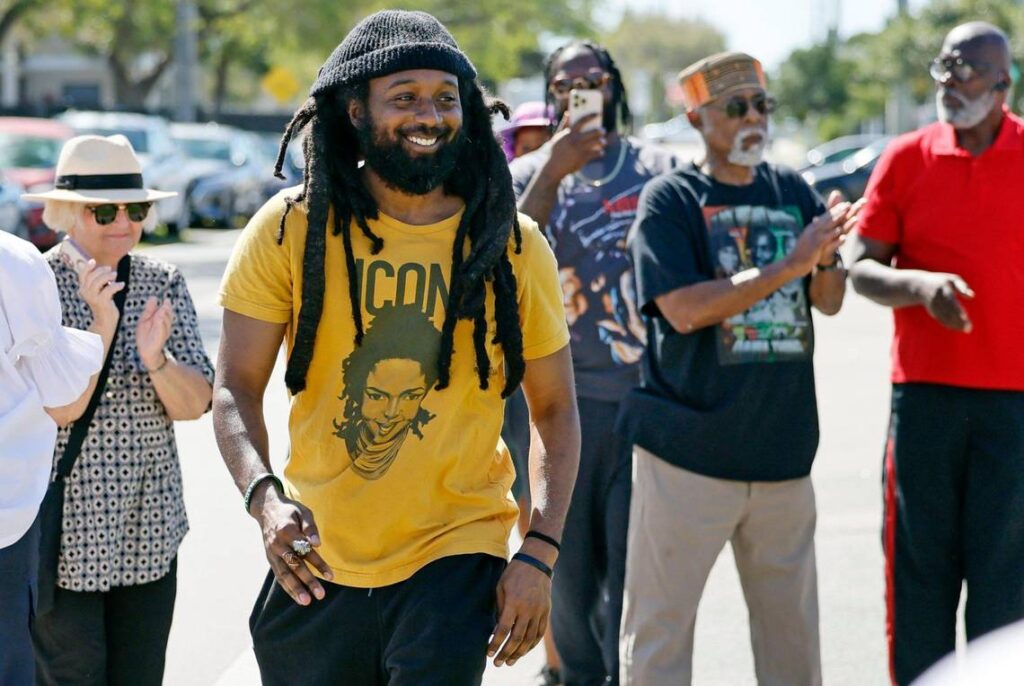
People at Saturday’s ceremony stood at what was once the epicenter for Black businesses in Liberia. But that epicenter has changed. A Hollywood city building occupies part of the street, a historical cemetery sits across from it, and nearby Attucks Middle School was once a high school and a central part of the community during segregation.
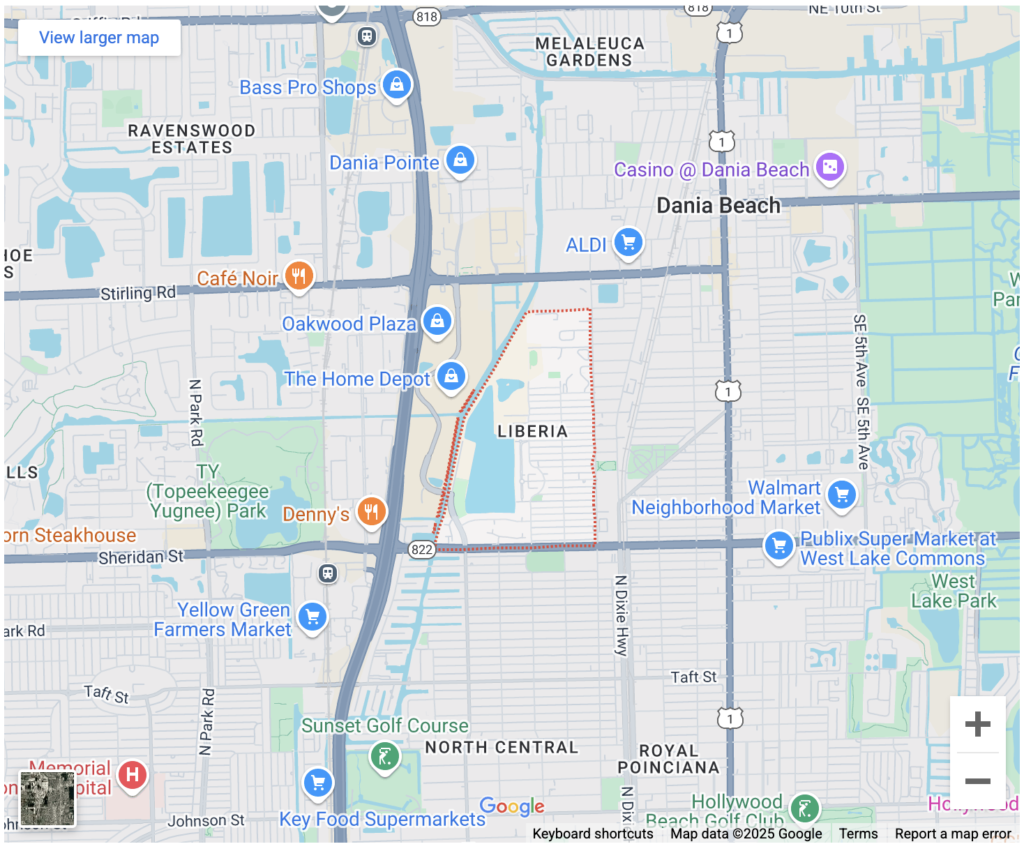 “It’s a story that needs to be told,” Beneby said. “The way people are disappearing around here, a lot of the history would disappear if we didn’t have symbols like this for the young people. … There are people who live here and don’t have any idea of what this community was like in the 1920s and the ‘30s. They don’t know about the people that came out of this community and the effect that they might have had nationally.”
“It’s a story that needs to be told,” Beneby said. “The way people are disappearing around here, a lot of the history would disappear if we didn’t have symbols like this for the young people. … There are people who live here and don’t have any idea of what this community was like in the 1920s and the ‘30s. They don’t know about the people that came out of this community and the effect that they might have had nationally.”
‘A vibrant community that survives today’

“When you think about 1922, there was nothing here. There was literally nothing but tomato fields,” said Taylor, the Hollywood Historical Society president. “This neighborhood and these people have been here since the beginning of Hollywood. People don’t know the story of Liberia.”
Thanks to this historic marker, they will now. Joseph Young, a white developer and City of Hollywood founder, came to South Florida in 1920 to build a “dream city.” Unlike what South Floridians may be used to today, Taylor said, the area was considered part of the Deep South, Miamians spoke with a southern drawl and segregation laws were intense. As he planned the city, Young kept the Black population in mind.
Taylor points to a hand drawn 1923 map of Hollywood. The small city plan included a couple of parks, an 18-hole golf course and a boardwalk for beachgoers. Exactly one mile north, just west of Dixie Highway, drawn in a perfect square with a circular park and hotel at its center is the neighborhood for Black Hollywood residents, labeled with the name “LIBERIA.” The city of Hollywood, including Liberia, was founded in 1925.
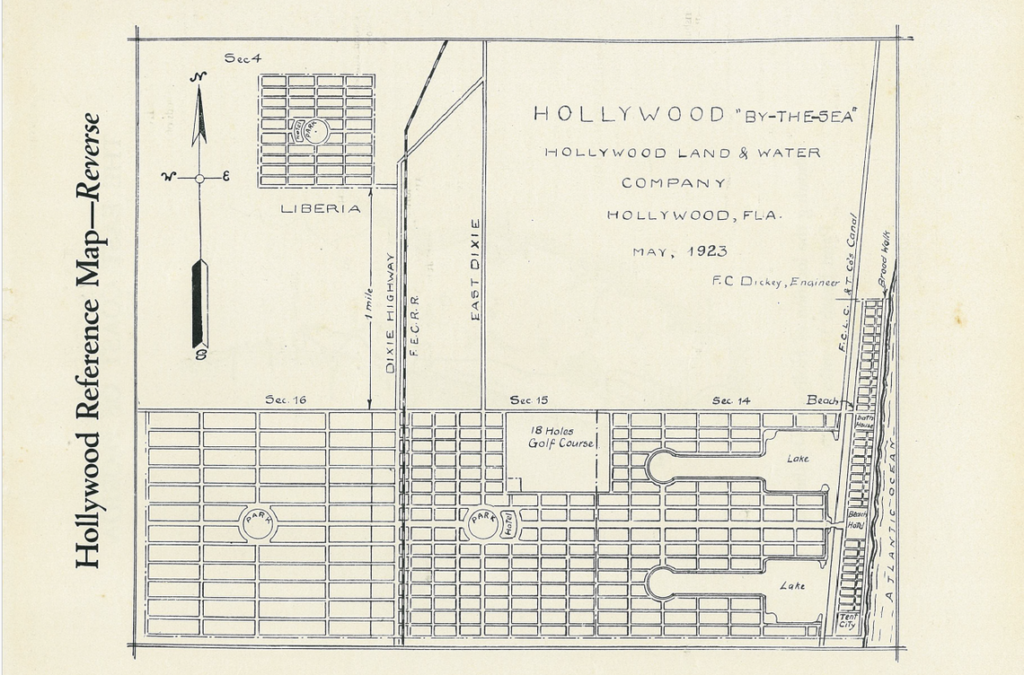
“He called it Liberia, for the country in Africa that was created for freed slaves that wanted to go back to Africa. He laid roads, he ran power and electricity. He donated land for schools and churches. That set the tone for the Liberian community,” Taylor said. “They had something of a head start because of the infrastructure improvements Young made that I don’t think a lot of developers in Florida were doing for the Black community at that time.”
The result was a tight-knit and resilient neighborhood. Black families from other parts of the south, like Georgia and South Carolina, moved to Liberia along with Bahamian immigrants. “To understand and appreciate Liberia is to appreciate something that may have been created because of Jim Crow segregation, but was recreated by the people who came into it and made it a vibrant community that survives today,” said Kitty Oliver, a veteran journalist and historian who has documented Liberia’s stories for decades. Henry Graham, a well-known community figure and the founder of nonprofit Liberia Economic and Social Development, Inc., recalled how his neighbors were always willing to help each other. He moved to Liberia with his grandparents in 1957. Because Black residents could not go to a nearby hospital, Graham said, the community relied on house aides, older women who lived in Liberia who grew medicinal herbs and spices in their backyards. If you were sick, the house aides had the cure. If you were pregnant, “they delivered those children right and left,” Graham said.
Resources from the government were limited, too. In the ‘50s, only the main street was paved, he said. The rest were gravel roads. And before street lights were installed throughout the neighborhood in the ‘60s, the roads were pitch black at night, causing deadly car crashes, he said. Reminders of segregation were never far. Several of the streets that ran through Liberia were named after Confederate generals until the city of Hollywood changed them in 2018. Graham recalled when he visited a Kwik Chek grocery store in Hollywood when he was young. He decided to drink the water from the “white” fountain because he wanted to see if it tasted different. A white woman began screaming and ran to find a manager. Thankfully, Graham said, the manager was kind to him. “I’m sorry that this has happened, but this is the way the system is operating,” the manager told him.
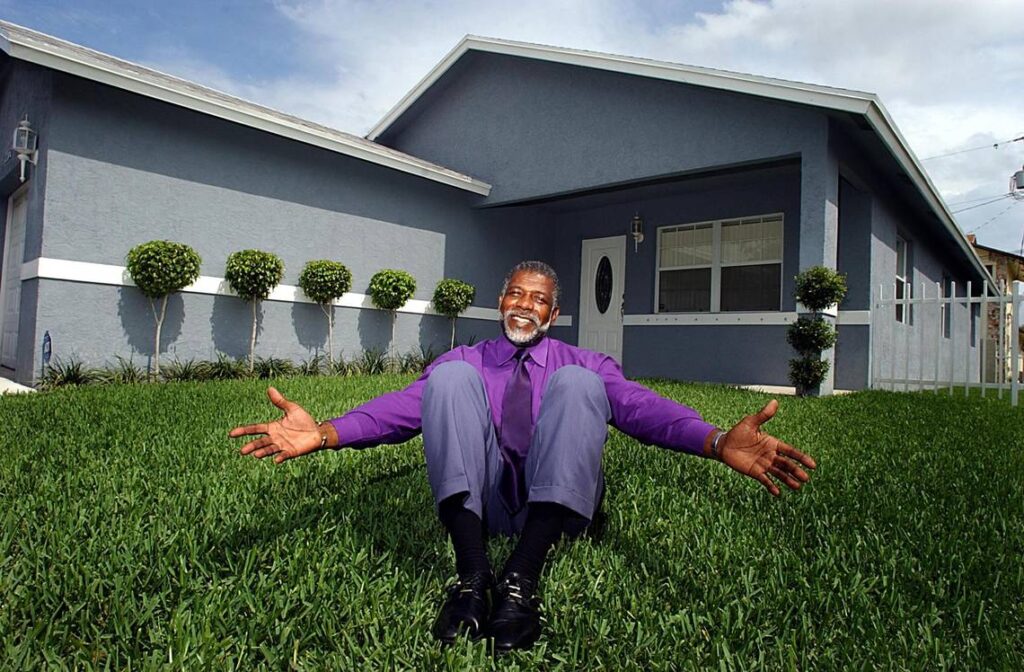
Despite the hardships of Jim Crow, Liberia was a bustling part of town with pool halls, night clubs, churches, businesses and homes owned by Black residents. A key part of the neighborhood was Attucks High School, one of three Black high schools in Broward. Similar to Overtown in Miami, many Black celebrities stopped by Liberia, said Emmanuel George, a curator and community liaison at Old Dillard Museum.
He found video footage of the late actress Eartha Kitt visiting Attucks to raise money for the swimming pool. The father of actors Wood and Steve Harris attended Attucks. James Brown’s aunt lived in Liberia, and several elders have reported seeing Brown around town when they were kids, George said. And before his rise to fame, singer Sam Cooke and his gospel group performed in Liberia.
“I would describe Liberia as a community that, like many other historic Black communities — Harlem, Sistrunk, Atlanta — they have a rich story that needs to be told,” George said. “And when one looks into this community, they would find that there are similarities to other historic black areas.”
Doing right by Liberia
Liberia fell on hard times from the 1970s through the early 2000s for several reasons, historians said. During integration, many community members left. The neighborhood was also heavily impacted by Attucks’ downgrade from a high school to a middle school in 1968 because high school students would patronize many local businesses, George said. The war on drugs of the ‘70 and ’80s took a toll on Liberia, just as it did in many Black neighborhoods throughout the country. Miami Herald headlines talked of the neighborhood’s “slums” and unfair housing conditions. One 1990 story read: “The apartment is cramped, hot, falling apart. Six kids, a mom and a 5-month-old grandson share two squat bedrooms. The back-door screen is broken, and roaches are everywhere. This month, the rent went up.”
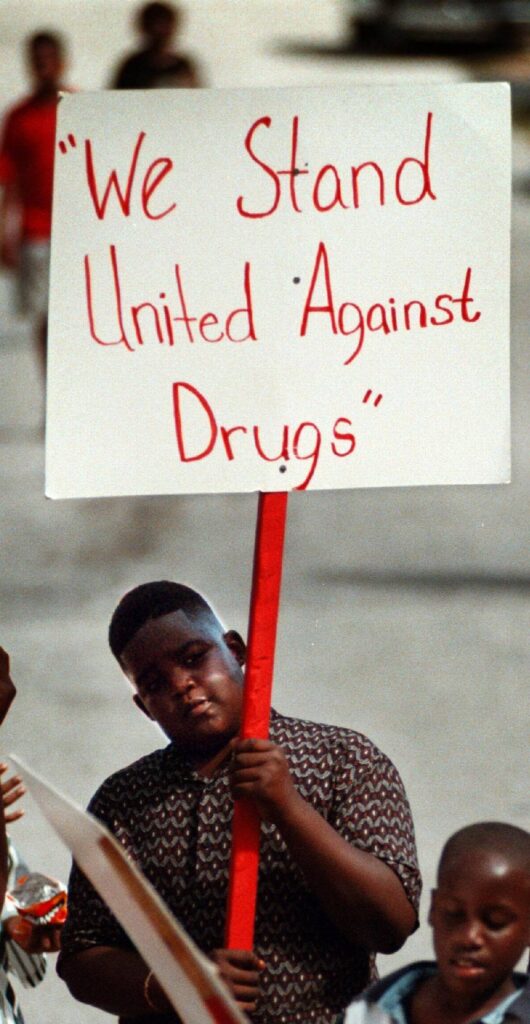
Graham and his nonprofit worked tirelessly to improve Liberia’s housing, creating programs to put young men to work in construction, scrounging for funding to promote Black home ownership. Doing right by Liberia was a constant struggle and securing federal and local funding for a Black neighborhood was nearly impossible, he said. Despite it all, Graham built over 300 homes in Liberia.
Today, Liberia is still predominately Black, though more multi-cultural. The Hollywood Historical Society unveiled the neighborhood’s historical marker as part of the city’s centennial and Black History Month, Taylor said. Liberia’s historic marker is especially timely given conservative politicians’ efforts to restrict the teaching of Black history in schools, nationally and locally.
“People are starting to be afraid of talking about history that might be unpleasant,” Taylor said. “I’m a historian, and I firmly believe in the historic statement that if you don’t remember your history, you’re doomed to repeat it.”
When asked about the marker’s significance, Graham, 79, immediately thought of schools. “What our government has done is to say they would not allow Black history to be taught or exposed in public schools. Why do you put the brakes on telling the true history of Blacks?” Graham said. “We’ve come a long way, but we’ve not come as long as we should have.” This story was originally published February 15, 2025 at 3:43 PM.
Read more at: https://www.miamiherald.com/news/local/community/broward/article300120514.html#storylink=cpy

